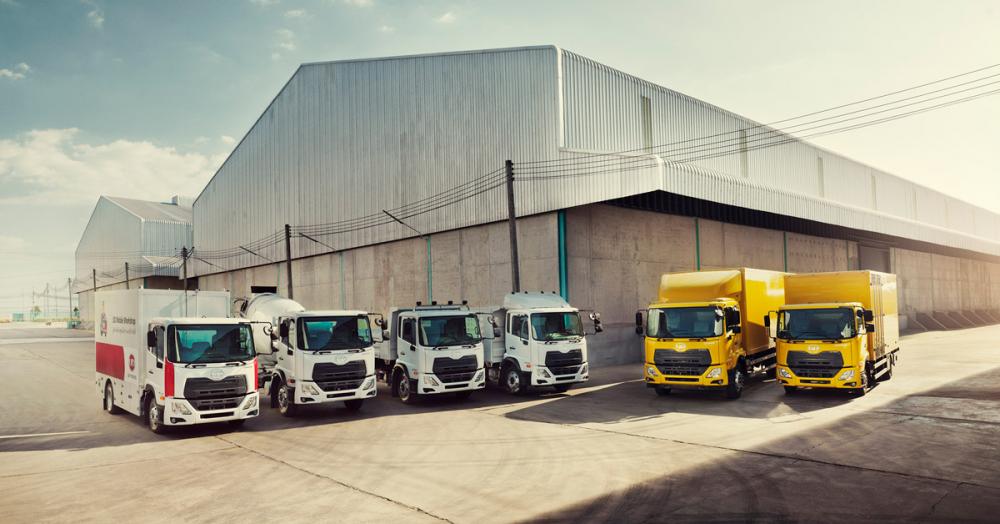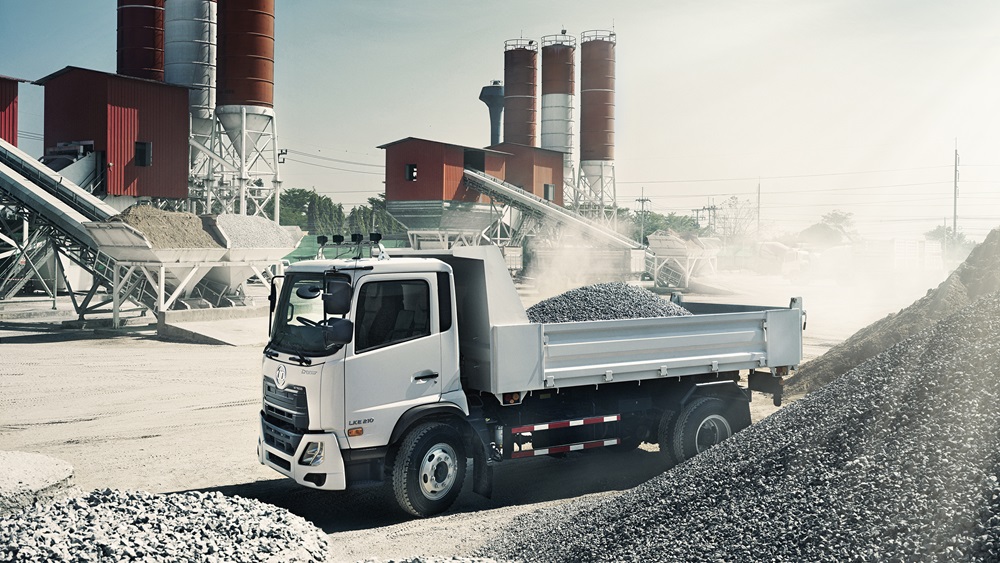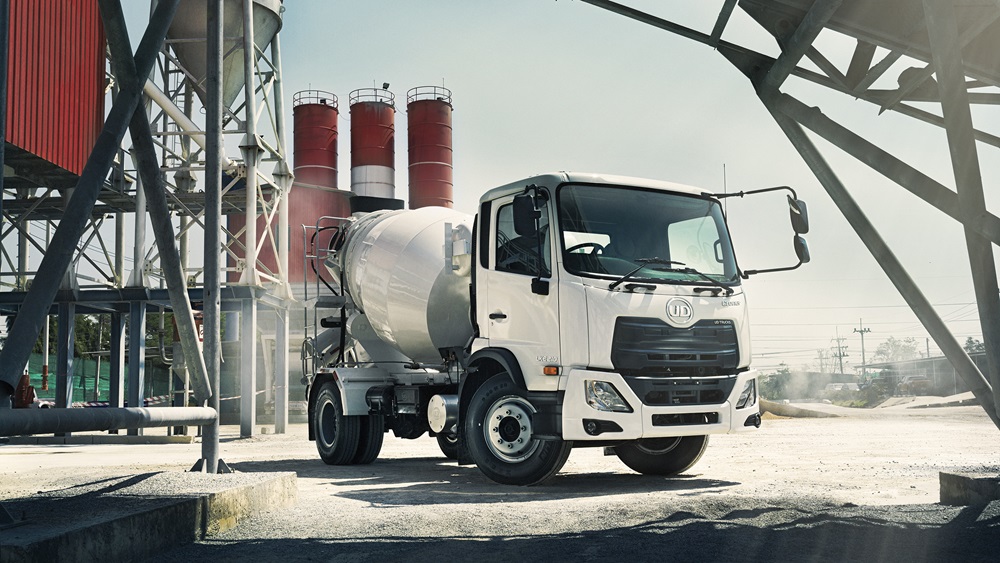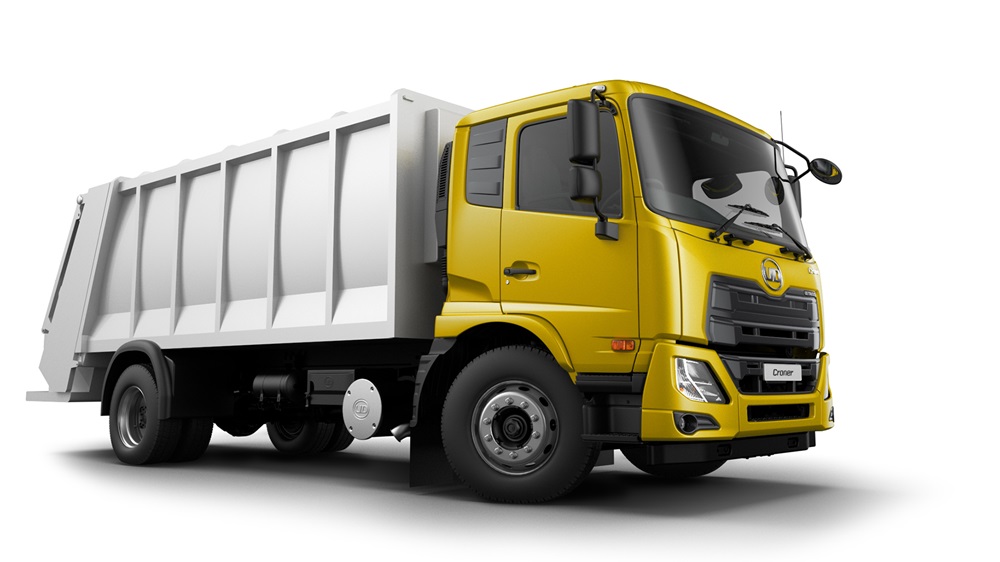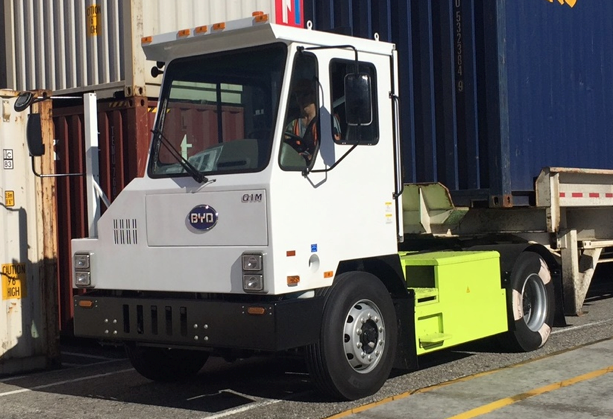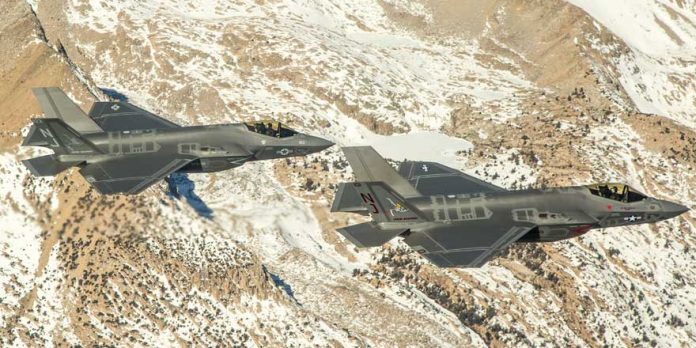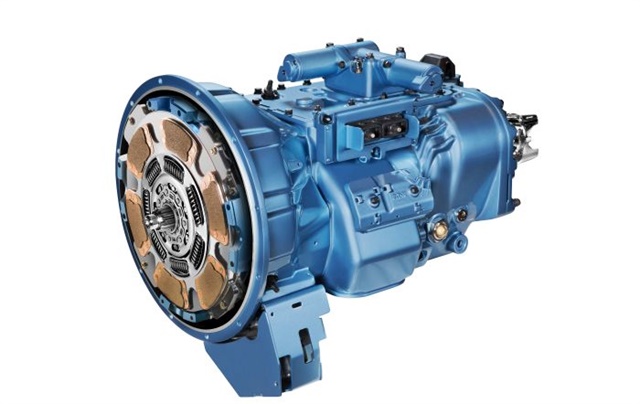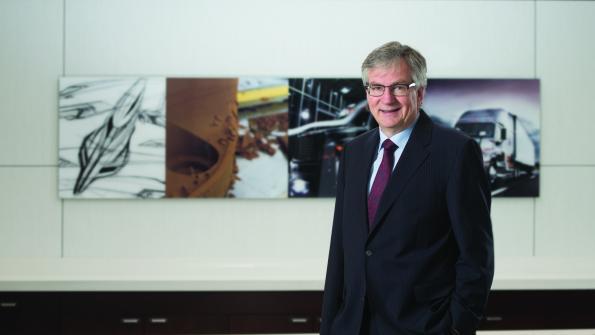
kscarbel2
Moderator-
Posts
17,893 -
Joined
-
Days Won
86
Content Type
Profiles
Forums
Gallery
Events
Blogs
BMT Wiki
Collections
Store
Everything posted by kscarbel2
-
"Saudi Arabia, I get along with all of them. They buy apartments from me. They spend $40 million, $50 million. Am I supposed to dislike them? I like them very much." Donald Trump Campaign Rally - Mobile, Alabama - August 21, 2015 http://www.npr.org/sections/parallels/2016/11/22/502864928/the-big-overlap-between-trumps-global-holdings-and-u-s-foreign-policy https://www.washingtonpost.com/news/worldviews/wp/2017/01/30/donald-trumps-already-complicated-relationship-with-saudi-arabia/
-
I agree Paul. But we've already been vetting would-be immigrants for years. Not too long ago, it took a year for my wife to obtain her immigrant visa, and subsequently "green card", as a result of the long time vetting process. How many terrorists come from Norway? And she has a U.S.-born citizen spouse. So we've already been vetting. The only difference I see here is that it's almost impossible to vet these people. And if we can't confirm the background from problematic countries................. Do you agree that the countries home to the terrorists who have killed Americans should also be on the list?
-
When you called the folks at Watt's Mack (provider of the BMT website) at 1-888-304-6225, what did they say? NLA thru Volvo?
-
Sold! GM offloads Opel onto PSA Peugeot Citroen
kscarbel2 replied to kscarbel2's topic in Odds and Ends
Marchionne says rationale for GM-FCA merger stands, even after PSA buys Opel Reuters / March 7, 2017 Fiat Chrysler CEO Sergio Marchionne said he could approach GM again regarding a potential merger, adding a rationale for a tie-up still existed even after the U.S. rival decided to sell its European operations to PSA Group. Marchionne has long advocated more tie-ups in the industry to share the prohibitive costs of making cleaner and more technologically advanced vehicles, but his bid to merge with GM was repeatedly rebuffed. "I never close any doors... I may shamelessly try knocking on the GM door again, or any door, if I thought it was a good thing to do for the business, without even blinking, I could," Marchionne told reporters at the Geneva auto show. Marchionne said the PSA-Opel deal, announced on Monday, would reduce potential synergies FCA could reap from a tie-up with GM by around 15 percent, but the deal would still be worth pursuing. The executive stressed, however, that after leaving Europe, GM may be even less inclined to engage in talks with FCA. -
Sold! GM offloads Opel onto PSA Peugeot Citroen
kscarbel2 replied to kscarbel2's topic in Odds and Ends
Why Ford stands by its 'One Ford' philosophy Automotive News / March 7, 2017 One argument for selling Opel to PSA is that General Motors' global engineering demands suddenly get a lot less complex. What's more, GM's Detroit bosses say there's far less overlap between Europe and the rest of the world these days. Well, Ford of Europe product development chief Joe Bakaj isn't commenting on GM's retreat from Europe, but he's adamant that Ford sees no reason to step away from its "One Ford" philosophy. "We're still convinced that our One Ford global engineering structure is working for us," he said. "You can see some of the results on our stand here today. "The Mustang last year was the No. 1 selling sports car in Europe -- it outsold the Porsche 911 in Germany. How could that happen without strong One Ford global engineering?" A decade or so ago, the Mustang's manual gearshift was, Bakaj concedes, "a point of contention." But the current Mustang shifter, developed with Getrag and refined in Europe, has been praised by finicky European car journalists. "Through One Ford we were able to apply manual transmission expertise in Europe into the global product, and we now have a great-shifting Mustang that has done really well," he said. "That to me is a great example of how global engineering can work for us, taking the best knowledge from each region. "If (Ford product development boss) Raj Nair was here he'd tell you how fortunate he is to have part of his product development team here in Europe. It's a global knowledge base." A key factor, Bakaj says, is developing mainstream cars that will traverse the Autobahn, Autoroute and Autostrada at breakneck speeds. "It does count," he says. "An example of a great global product is the Focus RS, which we now sell in the U.S." The Focus RS was set up to go 265 kmh (165 mph) on the Autobahn every day of the week. "When you develop a vehicle to be safe and controllable at those speeds it forces you to cascade that knowledge right down into the details of every component in the vehicle." -
If the engine is original, your Mack dealer can provide you with the appropriate turbocharger after you give them your truck's model and serial number (the last 5 digits of the VIN) off of your truck's vehicle identification plate on the driver's door.
-
.
-
UD Trucks Launches the New Croner UD Trucks Press Release / March 6, 2017 UD Trucks today launched Croner, an all-new medium duty truck, to continue its rich Japanese legacy of building the “truck that the world needs today” specifically for its growth markets across Asia, Africa, Middle-East and South America. Making the best of your time Croner is a reliable and versatile truck range built with robust and quality components delivering extra productivity and superior uptime. By understanding customers’ demand and business needs, Croner is engineered to help customers stay ahead of competition, through the simple concept of saving time. “UD Trucks believes that more time spent on the road and less time in the workshop adds up to the success of our customers’ business. It is our aim for Croner to make every moment count, through maximizing productivity and minimizing downtime on every run our customers make,” said Jacques Michel, President, Volvo Group Trucks Asia & JVs Sales. “The superiority of Croner comes from the best of three worlds – UD Trucks’ strong Japanese heritage and craftsmanship, Volvo Group’s global technology and sourcing, and local manufacturing and customer support. Further to that, with UD Trucks’ Ultimate Dependability standard and Gemba spirit incorporated in every aspect, each component is the result of years of development and stringent stress testing – a true testament to the Japanese hallmarks of quality,” said Jacques. Going the extra mile Named after the god of time in Greek mythology, Croner is designed to excel in the medium duty segment to compete in growth markets. Croner has options for three gross vehicle weight (GVW) models: MKE, LKE and PKE; and their wheelbase variants, which can offer up to 21 different basic configurations to suit specific demands of various industries. Additionally, the air suspension on all variants is available as an option to protect customers’ cargo especially when travelling on rough road conditions. “As drivers spend a good amount of time on the road, we at UD Trucks leaves nothing to chance, and that includes safety and drivability. With superior braking and handling features, Croner keeps customers’ drivers and their fleets in prime condition,” said Nobuhiko Kishi, Senior Vice President, Brand and Product, UD Trucks. “As for drivability, Croner’s automatic transmission option can be crucial for markets like South Africa where it is facing serious driver shortage due to the strenuous demands on drivers, especially in long haul driving. Croner can help customers attract drivers as this option provides ease of drive and reduce fatigue for both experienced and inexperienced drivers.” “Similarly, automatic transmission can be seen as a game changer for the truck industry in the Asia region as it helps lower cost and downtime, as manual transmission is more susceptible to wear-and-tear especially to its clutch in a long run,” added Kishi. According to Kishi, Croner’s superior uptime stems from its reliability due to robust components such as its driveline and new chassis frame that are more durable and allow for longer time between scheduled service intervals. Fuel is a high expenditure for fleet owners considering the number of trucks and journey they make. “Croner is one of our most fuel efficient trucks ever. It utilizes the fuel needed efficiently without waste, thanks to the new GHE engine series, automatic transmission, a built-in fuel couch, and a more aerodynamic cab which reduces the coefficient of drag (CD) more significantly by 5 percent,” said Kishi. “Going the Extra Mile” is the brand promise of UD Trucks with a focus on fuel efficiency, uptime, reliability and drivability, while meeting today’s high standards for safety and environment, allowing UD Trucks to provide customers with the best products and services in the market to meet their business needs. Extra Mile Support services UD Trucks takes pride in its comprehensive set of UD Extra Mile Support services, such as UD Genuine Service and Parts, UD Driver Training, and UD Trust Service Agreements. These were developed to ensure its trucks such as Croner run and remain in optimum condition to go the extra mile, saving minutes, hours, and days over the years. In addition to its Extra Mile Support, UD Trucks also offers professional telematics solution that provides customers with real time information and reports to improve their fleets’ operation. By connecting its trucks to the UD workshops, UD Trucks enables proactive and continuous workshop support to its customers. The production of Croner will be done in UD Trucks Bangkok Factory in Bang Na, Thailand. Units made will be sold locally to the Thai market as well as exported out to other growth markets in Asia, Africa, Middle-East and South America. UD Croner website - http://www.udtrucks.com/en-int/trucks/croner .
-
California to spend $9M on Chinese Class 5 & 8 electric trucks
kscarbel2 replied to kscarbel2's topic in Trucking News
MEDIA ADVISORY: 27 electric trucks coming to Fontana freight yard and two rail yards California Air Resources Board (CARB) / March 6, 2017 California-made zero-emission freight trucks replace diesel vehicles in low-income communities SAN BERNARDINO - On Friday, the State of California, San Bernardino Council of Governments (SBCOG) and partners Daylight Transport and BYD celebrate the arrival of the first of 27 next-generation zero-emission electric yard and service trucks in San Bernardino, Los Angeles and Fontana. The trucks were funded by $9 million from the State’s climate change-fighting cap-and-trade program. WHO: Joshua Monzon on behalf of Senator Mike Morrell Jordan Gurnett on behalf of Assemblymember Marc Steinorth California Air Resources Board (CARB) Vice Chair Sandy Berg SBCOG Board President Robert Lovingood Daylight Transport Executive Vice President Greg Steele San Bernardino County Supervisor Janice Rutherford Fontana Mayor Acquanetta Warren BYD Vice President of Truck Sales Andy Swanton WHAT: The first of 27 battery-electric yard and service BYD trucks delivered to Daylight Transport freight-handling service center in a disadvantaged community within the city of Fontana. More electric trucks to be delivered this summer to BNSF rail yards in San Bernardino and Los Angeles. The trucks are part of a pilot program to test this technology in daily use. WHEN: 11:00 a.m., Friday, March 10, 2017 WHERE: Daylight Transport Service Center, 11160 Elm Avenue, Fontana. The newly constructed 60,000-square-foot state-of-the-art service center is equipped with a 600-kilowatt rooftop solar system that Daylight estimates will generate 85 percent of energy used. The facility will achieve USGBC LEED certification through efficient, sustainable and socially responsible design. VISUALS: Demonstrations of fully electric 80,000-pound (GCVWR) yard truck and 16,100-pound (GVWR) service truck in operation – and being charged. Ride-along opportunities. • BACKGROUND: This demonstration project will accelerate the commercialization of heavy-duty advanced, zero-emission technologies. The electric-powered trucks will operate at a Daylight Transport trucking freight facility and at two BNSF rail yards, replacing the most commonly used diesel-powered trucks in freight facilities. The project is paid for in large part by a $9.1 million grant awarded to SBCOG from CARB through California Climate Investments, a statewide program that puts billions of cap-and-trade dollars to work reducing greenhouse gas emissions, strengthening the economy and improving public health and the environment – particularly in disadvantaged communities. The electric trucks are provided by BYD Motors, whose North American headquarters are in Los Angeles. A BYD all-electric yard truck eliminates use of diesel fuel. A typical yard truck burns 2 to 4 gallons of diesel fuel per hour. -
Air Force to buy foreign ammunition for F-35 stealth multi-role fighter Defense Blog / March 6, 2017 German defence and automotive group Rheinmetall said on Monday it had booked a $6.5 million U.S. Air Force contract to supply ammunition for the F-35 multi-role fighter, adding that further orders were likely to follow. The order is of major strategic significance to Rheinmetall for two reasons. For one thing, the US Air Force is currently procuring the F-35 on a large scale, with 1,200 planes on order. Numerous other nations have opted for the new aircraft as well, among them Denmark, the United Kingdom, Italy, Canada, the Netherlands, Turkey and Japan. For another, the ammunition selected – the new 25mm x 137 Frangible Armour Piercing (FAP) – complements Rheinmetall’s existing array of high-performance aircraft ammunition, allowing the Düsseldorf, Germany-based Group to bring its full expertise to bear in the field of aircraft armament. This means that further major orders can be expected, especially since the first user nations are already ordering smaller amounts of this advanced ammunition for testing purposes. The FAP round was specifically developed by Rheinmetall for, and in conjunction with, NATO air forces to provide the F-35 with superior lethality against modern Infantry Fighting Vehicles (IFVs) at extreme slant ranges while still remaining deadly against enemy aircraft in air-to-air engagements. The 25mm x 137 FAP is a true all-purpose cartridge that is already in service with the F-35s of two NATO nations. Manufacture of the ammunition for the US Air Force will take place at Rheinmetall Switzerland. Rheinmetall intends to have the ammunition of possible follow-up contracts assembled in the USA by Rheinmetall Day & Zimmermann Munitions (RDZM), a joint venture that operates out of Rosslyn, Virginia. American Rheinmetall Munitions and Day & Zimmermann established the joint venture in autumn 2016. Other potential customers will be supplied from locations belonging to Rheinmetall Waffe Munition Schweiz AG. .
-
UK says longer semi-trailers are safer and more efficient
kscarbel2 replied to kscarbel2's topic in Trucking News
Longer semi-trailer trial permits now available Commercial Motor / March 6, 2017 Hauliers can now apply for the new round of permits to run longer semi-trailers (LSTs), as part of the extension to the trial announced earlier this year. The Department for Transport (DfT) has extended the original 10-year trial by five years, and made permits available for an additional 1,000 LSTs. The permits allow the holder to run either 15.65m or 14.6m trailers, on the condition that they report data from their operation back to the DfT. Permits for the new wave of trailer can be obtained by emailing freight@dft.gsi.gov.uk, and operators will be able to put the new trailers on the road from 1 May onwards. Hauliers will have six weeks to prove they’ve ordered their permitted trailers after the permit has been granted by DfT. The RHA said it supported the time limit, which, it said, demonstrated that “applications should only be made where there is a firm intention to order and not be speculative”. Those already running LSTs in the trial are eligible to apply for further permits up to a limit of 20% of their total vehicle fleet. In regards the used market, once participants have obtained longer semi-trailers, they are free to purchase vehicles from each other (the allocation quota moving with the vehicle although they need to inform the DfT). . -
Heavy Duty Trucking / March 6, 2017 Truck and van body maker Morgan Corporation has launched its NexGen line of truck bodies for dry freight and refrigerated applications. NexGen bodies make use of more advanced designs and materials, resulting in truck bodies that are lighter than similar units but are capable of carrying more payload, according to Morgan. The design of NexGen bodies also results in increased fuel economy and better resistance to the elements. The lightweight body is built of non-corrosive materials to inhibit rust, improving durability and slowing aging. NexGen bodies feature stain-resistant phenolic flooring in the dry freight body and an aluminum silent floor in the reefer. Sealed joints prevent leaks to keep product, cargo, or tools dry, using elastomeric gaskets in the connection profiles to provide protection from water intrusion. The bodies also use hard-mount installation brackets in place of U-bolts to improve overall durability. For more information, click here. .
-
No clear 'net benefit' to overnight restart, FMCSA concedes
kscarbel2 replied to kscarbel2's topic in Trucking News
No 'Net Benefit' Found in Controversial 34-Hour Restart Provisions Heavy Duty Trucking / March 6, 2017 A DOT study apparently has failed to “explicitly identify a net benefit” from two suspended provisions of the hours of service rules regarding the 34-hour restart. The Federal Motor Carrier Safety Administration issued hours-of-service regulations in 2013 that featured two controversial restart provisions. They required that the 34-hour restart include two 1 a.m. to 5 a.m. periods, even if the 34 hours had already been reached. It also limited use of the restart provision to once every 168 hours. The trucking industry raised concerns about the rule’s unintended consequences, such as increased congestion during daytime traffic hours. In late 2014, as part of the Consolidated and Further Continuing Appropriations Act of 2015, Congress suspended those two provisions and directed FMCSA to conduct a study of the operational, safety, health, and fatigue impacts of these rules. Although the data collection for that study was completed in 2015, the study has not yet been made public. But a DOT spokesperson told HDT on March 6 that "we are currently in the final stages of review before transmitting the report to Congress." The law also mandated that the DOT's Office of Inspector General review the study. Last week, in a letter to Congress, the OIG wrote that it “found that DOT’s study met the act’s requirements. We also concur with the Department’s conclusion that the study did not explicitly identify a net benefit from the use of the two suspended provisions on driver operations, safety, fatigue, and health.” Drivers from a variety of fleet sizes and operations provided a substantial amount of data during the study period, according to FMCSA. More than 220 drivers contributed data as they drove their normal routes. The data included over 3,000 driver duty cycles captured by electronic logging devices, over 75,000 driver alertness tests, and more than 22,000 days of driver sleep data. American Trucking Associations President and CEO Chris Spear said the trucking industry was pleased by the news. "The release of this report closes what has been a long, and unnecessary, chapter in our industry's drive to improve highway safety," Spear said. "We knew from the beginning that these Obama administration restrictions provided no benefit to safety, and in light of the DOT's findings – corroborated by the DOT Inspector General – it is good for our industry and for the motoring public that they will be done away with permanently as specified by language ATA lead the charge on including in the most recently passed Continuing Resolution." ATA has fought against these restrictions – which limited drivers' flexibility in the use of the restart – since they were first proposed in 2013. "Congress repeatedly told the Federal Motor Carrier Safety Administration that rules of this nature must show a benefit to safety and this report clearly shows there was no benefit," Spear said. "This marks the end of a long struggle, but hopefully the beginning of a new era of inclusive and data-based regulation." The Owner-Operator Independent Drivers Association also was quick to respond to the news. “It’s not only common sense, it’s trucker sense,” said OOIDA executive vice president, Todd Spencer, in a statement. “We have always championed the need for flexibility in the hours-of-service regulations so that drivers can drive when rested and avoid times of heavy congestion or bad weather conditions.” Lane Kidd, managing director of the Alliance for Driver Safety & Security, told HDT that “the results of the restart study were no surprise, since the Congress set the bar very high that the federal agency had to meet to justify the net safety benefits of the new rule.” “The OIG’s assessment of the restart study supports what the industry has been saying all along, that requiring two consecutive periods of 1-5 a.m. and limiting the restart to once a week didn't contain any net benefit to the industry,” David Heller, the Truckload Carriers Association’s vice president of government affairs told HDT. He added that TCA “looks forward to working with the Trump administration on promulgating future rules regarding truck drivers hours of service that make sense for the whole industry.” Joe Rajkovacz, director of governmental affairs and communications for the Western States Trucking Association, told HDT that the group also was "not really surprised by the finding and don’t think many others are in trucking, either. "The whole issue of the 34-hour restart provision had been politicized in our opinion," he added, "and it's nice to see a government agency actually use science appropriately to arrive at the correct result-– it's just too bad they sat on the findings for so long." -
No clear 'net benefit' to overnight restart, FMCSA concedes
kscarbel2 replied to kscarbel2's topic in Trucking News
34-hour restart study affirms less restrictive hours of service, buries 2013 regs Overdrive / March 6, 2017 The results of a new study confirm that truckers’ 34-hour restarts will not require two 1 a.m. to 5 a.m. periods and will not be limited to once per week. The study has not yet been made public, but a letter issued by the Department of Transportation’s Office of Inspector General confirms the report’s conclusions. To comply with an order from Congress, the study’s results dictate the removal of the 1 a.m. to 5 a.m. provision and the removal of the once-weekly limit. Congress suspended the 1 a.m. to 5 a.m. requirement and the once-weekly limit in December 2014, pending the issuance of the U.S. Department of Transportation’s study. The long-awaited report from the Department of Transportation shows those provisions did nothing to enhance safety, according to an OIG update issued last week. The DOT’s Federal Motor Carrier Safety Administration will likely need to issue a formal notice to permanently remove the rules, but the regs have been suspended since a December 2014-issued notice. The report does not change the rules truckers’ currently operate under. The DOT’s OIG on Thursday sent a letter to Congress signing off the DOT study, saying it agreed with the report’s conclusions and that the DOT followed Congress’ directives in completing the research. The study itself has not yet been made public by FMCSA. The study found that truckers abiding by the July 1, 2013, regulations — those requiring the early morning periods to be included in the restart — operated no more safely than truckers not abiding by the rules. More than 200 drivers were studied for the DOT’s report, which was executed by FMCSA and Virginia Tech. The drivers were divided into two groups. One group followed the more restrictive 2013 rules and the others were free to use the restart as they wanted. The study “did not explicitly identify a net benefit from the use of the two suspended provisions of the restart rule on driver operations, safety, fatigue and health.” Researchers compared drivers’ schedules and analyzed events like crashes and near crashes, as well as driver alertness and health. The more restrictive hours of service rules took effect in July 2013, prompting widespread criticism by both fleets and drivers for preventing truckers from returning to duty until 5 a.m. after a restart, even if the restart had spanned a full 34 hours. Chief arguments against the regulations were that it pushed drivers into early morning rush hour traffic — which caused safety and operational concerns — and that FMCSA issued the rule with little scientific evidence to back up the restrictions. Congress cleared legislation in December 2014 to halt the regulations and require FMCSA to perform the 34-hour restart study. Congress set the bar high for the 2013 rules to go back into effect, requiring the study to show exceeding safety and health benefits for drivers’ operating under the 2013 rules. -
Fleet Owner / March 6, 2017 Inspector General signs off on review of 2013 hours of service changes The Congressionally mandated review of 2013 changes to truck driver hours of service requirements has turned up no evidence that the restart provisions are, overall, beneficial. The tip comes from none other than the Department of Transportation’s Office of the Inspector General (OIG). In a letter to new Transportation Secretary Elaine Chao and key committee members in Congress, OIG signs off on the yet-to-be-released final report by the Federal Motor Carrier Safety Administration (FMCSA), saying the agency followed the review requirements imposed when lawmakers suspended provisions that included requiring consecutive nighttime off-duty periods (1 a.m. to 5 a.m.) to reset a driver’s weekly work limits. Those limits were not to be enforced pending a study that demonstrated the plan was effective in reducing fatigue-related accidents. Many in the trucking industry had lobbied successfully that the 2013 requirement disrupted the work schedules—and rest routines—of nightshift truckers and put more trucks on the highway during morning rush-hour periods. “We concur with the Department’s conclusion that the study did not explicitly identify a net benefit from the use of the two suspended provisions of the restart rule on driver operations, safety, fatigue, and health,” the OIG letter states. Language in the current DOT budget extension calls for the suspension to be made permanent with such a determination. A DOT spokesman told Fleet Owner the agency is "currently in the final stages of review" before sending the full report, delivered to OIG on Jan. 5, to Congress. American Trucking Associations President and CEO Chris Spear said the trucking industry was pleased with the validation of its position that the restart did not perform as advertised. “We knew from the beginning that these Obama administration restrictions provided no benefit to safety,” Spear said, “and in light of the DOT’s findings—corroborated by the DOT Inspector General—it is good for our industry and for the motoring public that they will be done away with permanently.” ATA has fought against these restrictions—which limited drivers’ flexibility in the use of the restart—since they were first proposed in 2013, the association notes. “Congress repeatedly told the FMCSA that rules of this nature must show a benefit to safety and this report clearly shows there was no benefit,” Spear said. “This marks the end of a long struggle, but hopefully the beginning of a new era of inclusive and data-based regulation.” The Owner-Operator Independent Drivers Association likewise agreed with the finding that there is no safety benefit in the currently suspended provisions. “It’s not only common sense, it’s trucker sense,” said OOIDA Executive Vice President Todd Spencer. “We have always championed the need for flexibility in the hours-of-service regulations so that drivers can drive when rested and avoid times of heavy congestion or bad weather conditions.”
-
Eaton’s Transmission Enhancements Target Vocational Fleets
kscarbel2 replied to kscarbel2's topic in Trucking News
Eaton Tunes Transmissions for Vocational Fleets Heavy Duty Trucking / March 6, 2017 Eaton has created a new Aggressive Performance calibration for the company’s lineup of UltraShift Plus and Fuller Advantage automated manual transmissions aimed at vocational fleets. The new software feature will help vocational fleets with quicker shift times to improve performance on steep grade climbs by allowing the engine to come in at higher RPMs. Better start gear selection and improved offset have also been added to provide a stronger launch, improving control in challenging terrain. Compared to the previous Performance calibration, the new Aggressive Performance calibration improves acceleration by up to 2.9 seconds faster to 25 miles per hour and up to 5.4 seconds faster to 55 miles per hour, according to Eaton. The new shift improvements have also resulted in better deceleration rates with raised downshift points and improved skip shifting on level ground. “Fleets have been asking us for better performance on grades and quicker acceleration,” said Chris Nielsen, manager, global product strategy, vocational and performance transmissions, Eaton Vehicle Group. “Eaton values customer feedback whenever it comes to improving our products, and we have responded with the new Aggressive Performance calibration that is ideal for fleets that are more performance-minded.” . -
CCJ Test Drive: Volvo SuperTruck Commercial Carrier Journal (CCJ) / March 6, 2017 The goal of the initial SuperTruck program was to boost freight efficiency by 50 percent. The Swedish-engineered SuperTruck sailed through that mark, hitting 88 percent while also improving fuel efficiency by 70 percent, which exceeded the 12 mpg target. Some test runs showed more than 13 mpg and powertrain brake thermal efficiency reaching 50 percent. See more details in the video. .
-
Truck OEMs Tout Their SuperTruck Improvements Transport Topics / March 6, 2017 Truck makers said they continue to reap huge benefits from the SuperTruck program, adding significant technology advances to their production models. In an update session at American Trucking Associations’ Technology & Maintenance Council annual meeting here, all four major truck original equipment manufacturers said they have met or exceeded the goals of the first phase of the SuperTruck program as they continue their research in SuperTruck II. Since its launch in 2010, the SuperTruck program has had two major statistical goals — increase freight efficiency by 50% over a 2009 baseline model for the first SuperTruck program and by 100% over the same base for SuperTruck II. SuperTruck II projects will place an emphasis on technology cost-effectiveness and performance. Achieving Class 8 truck efficiency increases will require an integrated systems approach to ensure that the various components of the vehicle work together. SuperTruck II projects will utilize a wide variety of truck and trailer technology approaches to achieve performance targets, such as improvements in engine efficiency, drivetrain efficiency, aerodynamic drag, tire rolling resistance and vehicle weight. But already the SuperTruck program has produced a variety of technologies in demonstration vehicles that are reaching the market. The SuperTruck program, equally funded by industry partners and the U.S. Department of Energy, is comprised of not only truck makers, but also suppliers who have all been drilling down on Class 8 subsystems, aerodynamics, and engine and materials to improve freight efficiency. On display at the TMC March 2 exhibition and podium session were production trucks from Volvo Trucks North America, Daimler Trucks North America’s Freightliner unit, Peterbilt Motors Co./Cummins Inc., along with Navistar’s project truck, said Ken Howden, director of DOE’s 21st Century Truck Partnership. The overall goal of the SuperTruck program is to accelerate introduction of Class 8 truck technologies that use less fuel, increase fuel diversity, operate more safely, are more reliable, meet future emissions standards and are cost effective. On display were production models of Freightliner, Peterbilt/Cummins Inc., Volvo and Navistar’s innovative SuperTruck demonstration vehicle, CatalIST. All four truck original equipment manufacturers’ project teams have exceeded the first phase freight efficiency goals. “Really this was not about a demonstration vehicle as much as it was advancing technology to put into vehicle production, said Ken Damon, manager of vehicle performance for Peterbilt. Peterbilt was the first to meet all the goals of the program, showing efficiency gains of 76% in the drive cycle and 86% in a 24-hour cycle, Damon said. Peterbilt also was able to reduce the weight of trailers by 1,300 pounds, Damon said. In 2014, Peterbilt launched its aerodynamic improvements, and in 2015 offered its predictive cruise control that uses GPS to look ahead at the approaching terrain to automatically adjust speeds, Damon said. Since then, the truck manufacturer has also launced a lighter front axle and a lighter composite brake drum assembly. Also, when compared to the 2009 baseline model, engine downspeed at 65 miles per hour has decreased considerably, from in the 1,400-1,500s rpm to the 1,100s,” said Vivek Sujan, a Cummins engineer. “And we can see in the future it’s going even further down.” Daimler’s Jeff Girbach, manager of engine technologies, agreed that the Freightliner’s SuperTruck also is capitalizing on high-risk, high-reward, research to ultimately bring significant improvements to company production models. “These programs grow into large partnerships with national labs, universities and all of the suppliers that contribute to a lot of our current trucks, partnering up with us to develop these exciting technologies,” Girbach said. “What we’re trying to do in these partnerships is create the most efficient Class 8 truck in the world.” Girbach said Freightliner achieved a 115% improvement in vehicle freight efficiency with the final demonstrator, 18% of which came from light weighting. “Our original baseline vehicle was 34,000 pounds, we dropped that to 31,200 pounds,” Girbach said. Charles Chilton, Navistar’s director of product development, said the company’s SuperTruck team worked on 40 different technical areas, achieving many results similar to the other OEMs. The Navistar truck achieved a freight efficiency improvement of 104% and has reached 13 miles per gallon. The vehicle also has demonstrated 50.5% brake thermal efficiency. “It’s the first class 8 highway tractor that changes shape driving down the highway,” Chilton said. “At low speeds we will change the height of the vehicle for curbs and docking situations.” “We have not yet given up,” he added. “We’re right now in the beginning phases of SuperTruck II phase, where we will to continue to improve the engine’s freight efficiency and provide commercially viable solutions that meet the simple payback equation, which in our world is about one to two years in terms of benefit to our customers.” Last fall, Volvo unveiled its version of SuperTruck with it’s modified VNL 670 highway tractor demonstrating an 88% gain in freight efficiency and an extra 70% in fuel economy. In model year 2016, Volvo VNL introduced a revised bumper with air flow underneath that combined with trailer aerodynamic fairings on it, about 0.5% to 0.7% increase in fuel economy, said Wade Long, Volvo’s director of product marketing. “But we continue to refine and make improvements to that truck,” Long said.
-
Eaton’s Transmission Enhancements Target Vocational Fleets
kscarbel2 posted a topic in Trucking News
Trailer/Body Builders / March 6, 2017 Eaton has created a new Aggressive Performance calibration for the company’s lineup of UltraShift PLUS and Fuller Advantage automated manual transmissions. The new software feature will help vocational fleets in the highly demanding construction site environments often encountered in North America. “Fleets have been asking us for better performance on grades and quicker acceleration,” said Chris Nielsen, manager, Global Product Strategy, Vocational and Performance Transmissions, Eaton Vehicle Group. “Eaton values customer feedback whenever it comes to improving our products, and we have responded with the new Aggressive Performance calibration that is ideal for fleets that are more performance-minded.” Eaton has enhanced the performance on grades by incorporating new quicker shift times -- estimated at 200-300 milliseconds faster -- which allows the engine to come in at higher RPMs resulting in powerful grade climbs. Better start gear selection and improved offset have also been added to provide a stronger launch for ultimate control in challenging terrain. Compared to the previous Performance calibration, the new Aggressive Performance calibration significantly improves acceleration -- up to 2.9 seconds faster to 25 miles per hour and up to 5.4 seconds faster to 55 miles per hour. In addition, new shift strategy improvements have resulted in better deceleration rates with raised downshift points and improved skip shifting on level ground. Eaton has an extensive lineup of rugged automated transmissions for the vocational work truck market with speeds ranging from 10 to 18 and maximum weight capacities from 110,000 to unlimited pounds gross combined weight rating. Available at many OEMs, the UltraShift PLUS and Fuller Advantage automated transmissions offer the broadest range of PTO compatibility and advanced features such as GearLogic technology to improve low-speed performance and driver confidence. Eaton Commercial Vehicle components are backed by Eaton’s Roadranger network of more than 180 drivetrain professionals who provide solutions, support and expertise to fleets and dealers. For more information visit www.eaton.com/roadranger. -
Daimler picks U.S. trucks chief Daum to replace Bernhard
kscarbel2 replied to kscarbel2's topic in Trucking News
An exit interview with DTNA’s Martin Daum Jim Mele, Fleet Owner / March 6, 2017 Promoted to run Daimler’s global truck business, he talks about his proudest achievement and favorite memory heading up Daimler Trucks North America. On Feb. 28 Martin Daum stepped down as president and CEO of Daimler Trucks North America, and on March 1 stepped up onto an even bigger stage as the head of Daimler’s global truck and bus businesses. His new official title is member of the Daimler AG Board of Management (BOM) with responsibility for Daimler Trucks and Daimler Buses. Along with that unwieldly title comes a corporate policy that all new BOM members refrain from public interviews and statements for their first 100 days. But with the understanding that he couldn’t talk about future plans or strategies, Daum bent that rule a bit to give one final interview for the North American truck market where he’s lived and thrived for the past eight years. Although his new office will be at Daimler headquarters in Stuttgart, Germany, “I’m not out of the North American industry,” Daum told Fleet Owner in a telephone interview. “I made many close and dear friends here and like Wolfgang [Bernhard, former Daimler Truck head who resigned in mid-February], I will continue to be at customer events and certainly at the NACV show in Atlanta in the Fall. After all, NAFTA is one of the cornerstones of our global truck business.” Daum also pointed out that he’s holding on to his house in Portland, OR, near DTNA’s main offices. “I really love Portland, and see us moving back to Oregon sometime in the future,” he said. For now, though, Daum is taking the helm of a global truck company that’s given him the opportunity to experience almost every aspect of manufacturing and marketing commercial vehicles since he joined Daimler’s management development program in 1987. “My resume includes sales, research, finance, manufacturing both in Europe and the U.S.,” he pointed out. “I bring diverse experience to the mix.” He’ll need that experience as he tackles huge challenges like trucking’s transformation all around the world by connectivity. “We can’t be full of words and no deeds,” Daum said. “We have to develop products that make sense, that sell and make the world a better place. That’s what we’ve done [in North America] and I’m excited to try to do it now on a larger scale.” The challenge Daum sees as he moves to that larger scale “is remaining a hungry but humble company that is highly efficient yet open to any changes the future will have in store for us.” Looking over his last eight years, Daum said he’s proudest of working with “a dream team” at DTNA, which not only operates the Freightliner and Western Star truck manufacturing businesses, but also includes Detroit Diesel, Freightliner Custom Chassis, and Thomas Built Buses. “There’s a culture there where one plus one equals much more than two,” he said. “Everyone is able to achieve so much because everyone supports each other. That’s what I’m proudest of.” How that culture was created is probably best illustrated by what Daum says is his favorite memory of his time at DTNA. “I took my top eight guys in four Cascadia sleepers and drove to the Oregon coast,” he recalled. “We dropped the trailers and took the tractors into a campground, where we broke out the grills and beer. After a wonderful evening, we all slept in the bunks – they put me with someone else who also snores. The next day we had a strategy session on a beautiful beach, then picked up the trailers and drove back to Portland. That was really cool.” He can’t talk about it for 100 days, but chances are good that Daum already has a campground picked out on the banks of the Rhine. . -
Jay Leno's Garage - 1965 Alfa Romeo Giulia Sprint Speciale
kscarbel2 posted a topic in Odds and Ends
-
Sold! GM offloads Opel onto PSA Peugeot Citroen
kscarbel2 replied to kscarbel2's topic in Odds and Ends
GM shifts from bigger is better to less global, more profitable Reuters / March 6, 2017 General Motors' decision to sell its European operations doubles down on a bet that the company can win by being less global, but more profitable, in an auto industry increasingly driven by software. Without the German Opel and British Vauxhall brands, GM last year would have sold about 8.8 million vehicles -- well behind Germany's Volkswagen AG and Japan's Toyota Motor Corp. in the race to be the world's largest automaker by vehicle sales. Opel and Vauxhall combined sold nearly 1.2 million vehicles in 2016, and generated $18.7 billion in revenue, about 11 percent of GM's total. However, all of GM's activity in Europe -- the investments in new model designs and cleaner engines, the efforts to make factories more efficient and the wages paid to 38,000 employees -- has generated nothing but losses since 1999. Meanwhile, GM's business in North America has boomed. GM's home market operations were reborn as a smaller company due in part to the U.S. government led bankruptcy in 2009, with fewer brands, fewer dealers, fewer employees and far less money owed to creditors and retirees. Since 2009, cheap gasoline has powered a boom in sales of high-profit pickup trucks and SUVs, lifting GM's North American pre-tax profit margins to just over 10 percent in 2016. To keep its North American profit machine revved up, GM will have to invest in new SUVs and trucks, as well as expensive technology to enable those trucks to meet rising federal fuel economy targets. Europe is demanding cleaner cars, too. But far less of the technology GM would buy to clean up European diesels and tiny gasoline engines would be useful in the U.S., where larger gasoline engines, including eight-cylinder motors used in pickup trucks, dominate the market. GM has concluded that it cannot achieve significant economies of scale in emissions technology for Europe on its own, company executives said. Peugeot CEO Carlos Tavares is wagering that he now can gain an advantage against rivals such as Renault SA and Volkswagen AG with the help of the added revenue and sales volume provided by Opel. France's PSA Group, the maker of Peugeot, Citroen and DS cars, announced a deal to buy GM's Opel division on Monday. GM's decision to walk away from Western Europe highlights two other profound shifts since 2009, when GM's board scuttled a deal to sell Opel and Vauxhall to a group led by auto supplier Magna International and Russia's Sberbank. The first is China, now the world's largest auto market with roughly 28 million vehicles sold in 2016, and more growth forecast to come. As China grows, GM will need to shift more vehicle engineering money and capital investment to feed that market -- which could eventually replace much of the global sales volume sacrificed by the sale of Opel to Peugeot SA. GM's Buick brand, its primary brand in China, and the Wuling brand of small commercial vehicles GM builds with partner Shanghai Automotive Industry Corp., each outsold Opel and Vauxhall in 2016. The second factor is the race to transform cars into electrified, intelligent devices that are paid for by the mile instead of purchased on installment plans. Asked last month whether GM needed more radical restructuring to lift its share price, GM CEO Mary Barra pointed to "the way that we are investing in the future, which I think is a huge opportunity, with transportation-as-a-service," and to "the opportunity that technology has to transform this industry" as factors that could change how the company is valued. Wall Street unchanged However, investors have not changed their views yet. Gary Silberg, head of KPMG's Americas automotive practice, said that when it comes to the digital systems and the people required to collect, analyze and manipulate the terabytes of data required to make a car drive itself, Silicon Valley companies such as Google parent Alphabet Inc. and ride services leader Uber Technologies Inc. have the edge. "The war for talent is absolutely essential to winning in the market place," Silberg said. And those adept in artificial intelligence systems "are not going to work for the auto industry." GM demonstrated the new economics of the industry last year when it agreed to pay $500 million -- and potentially more -- to buy a tiny San Francisco robotic driving technology startup, Cruise Automation. Ford Motor Co. followed suit with a $1 billion deal to bring aboard and fund the future work of robotic vehicle startup Argo AI. GM's Barra has told investors that GM would deliver 20 percent or better returns on invested capital, and hold capital spending roughly flat with current levels of $9 billion a year, putting extra cash into share buybacks. Those constraints on capital force tough decisions, Barra and other senior GM executives have said. The decision to abandon Opel after nearly 80 years is the most momentous yet, and the success or failure of the bet could define Barra's legacy. -
With all the talk of Russia................I noted this video yesterday, I believe from 2014. I personally found it interesting. As in business, I believe in directly hearing from the source their thoughts. If one continually rubs another person's face into the dirt, after a while, they rise up feeling as though they have nothing more to lose. Pride can be a powerful foe. I still believe a global solution requires cooperation between the US with Russia. .
BigMackTrucks.com
BigMackTrucks.com is a support forum for antique, classic and modern Mack Trucks! The forum is owned and maintained by Watt's Truck Center, Inc. an independent, full service Mack dealer. The forums are not affiliated with Mack Trucks, Inc.
Our Vendors and Advertisers
Thank you for your support!



